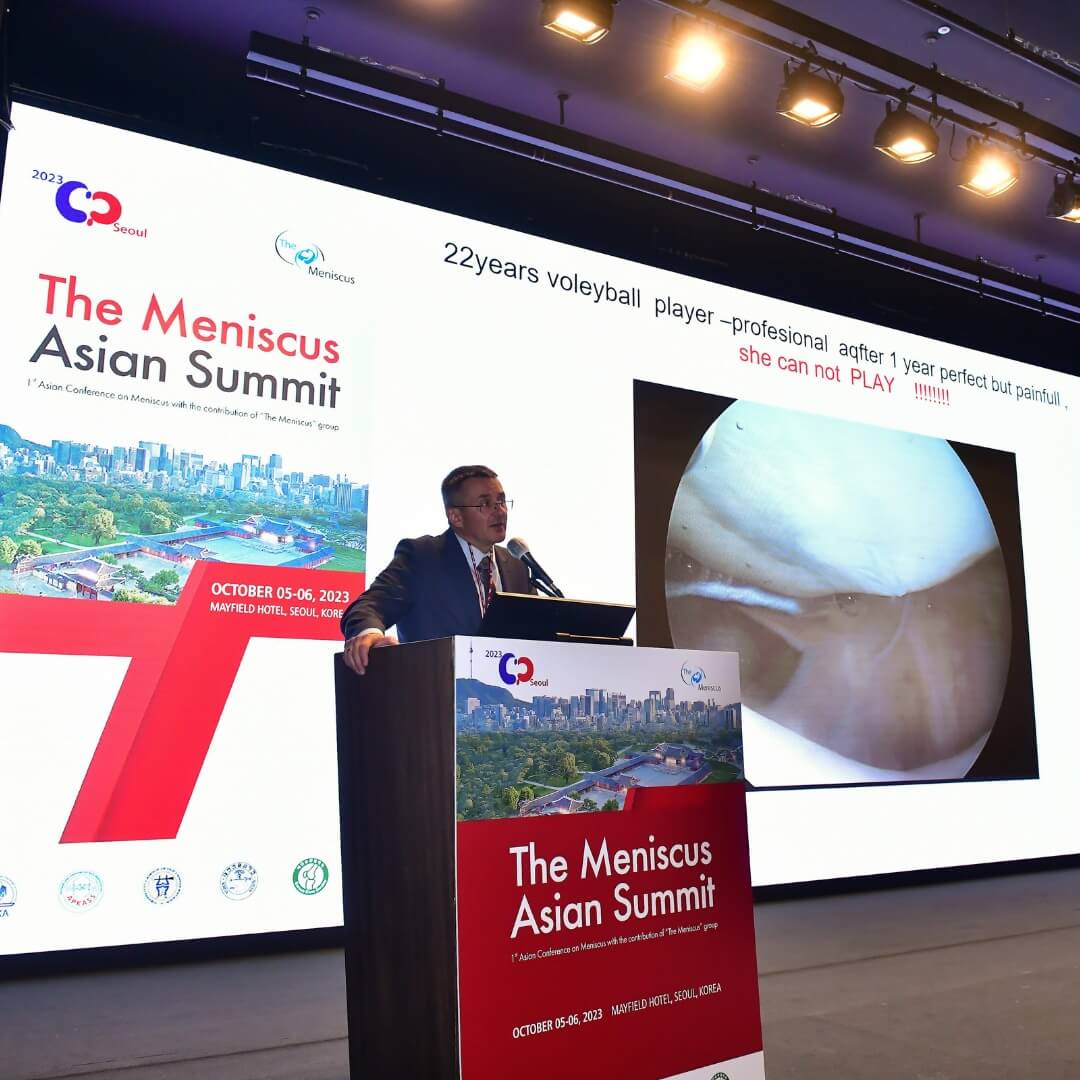The visit of the orthopedist from South Korea, a country extremely advanced in the field of medical development, is the result of last year's participation of Dr. Tomasz Piontek, on the panel of “The Meniscus” Asian Summit and the conference of the Korean Arthroscopic Society. That's when the Poznań-based orthopedist talked about new insights into the cause of patellar cartilage damage. And the history of interest in this topic is also incredible.
Indeed, pain in the anterior compartment of the knee joint affects many people. Young people come to the doctor, show where it hurts - often in the patella area. - This is an injury caused by local deficits, lack of stretching, poor training, and its treatment can be difficult. It's necessary to bet on improving biomechanics right away, frequent exercise, otherwise knees hurt. Even teenagers, who should not have problems at this age. Physiotherapy doesn’t help, injections don't help, and often this situation affects young women who feel pain in the anterior compartment of the knee,” explains Dr. Tomasz Piontek.
And he adds that in the past such people have returned to him after several years, having already severely damaged the patellar cartilage. - They are often 25 years old, and their knees look like those of a 55- or 60-year-old. The cartilage must be taken care of from the very beginning,” says Dr. Piontek.

A visit by a young volleyball player led to a breakthrough. The question arose: why?
The situation changed when a young volleyball player came to the doctor with knee pain. - An MRI showed patellar cartilage damage, we repaired it, but the pain didn't go away. I began to wonder, why? We performed a procedure that is designed for very difficult cases, lowering the entire condyle. This had an effect, she was back on the field, she could play,” admits an orthopedist from the Rehasport clinic.
This treatment led the orthopedist to look for another cause of the pain, a morphological one. Cooperation with Dr. Artur Banach, a scientist and fellow in the Marie Sklodowska-Curie program, provided an additional argument. - Artur is a former patient of ours, a sailor, former member of the Polish national team in olympic windsurfing. At the same time a man with an open mind, he defended his master's thesis in London, his doctorate in Australia, was research fellow at Harvard Medical School, and now works at Ecole Polytechnique Federale de Lausanne in Switzerland. We became friends, he became interested in the subject. We found in the literature that similar challenges had been taken up in the middle of the previous century by Dr. Gunnar Wiberg in the 1940s and Dr. Ralph Edward Outerbridge in the 1960s. We recalled their achievements, describing that they had found the reason why people can have complaints in the medial part of the patella,” he says.
He adds: - “And that's because the so-called ‘rim,’ a protrusion, sort of like the medial condyle, is dysplastic and has a sharp edge, in conflict with the patella. They hit each other, and after time a hole in the patellar cartilage forms. Dr. Outerbridge described this in 1961, but - as it happens in medicine - the knowledge escaped people. It disappeared for 60 years, and we rediscovered it. Together with Dr. Banach, but also with his former supervisor Prof. Nobuhiko Hata from Harvard and Prof. Ross Crawford from QUT Brisbane, Australia, we started discussing. And finally we prepared a publication,” says Dr. Tomasz Piontek.

An article in a prestigious magazine, is the result of subsequent discussions. And the work of people from different corners of the world
These discussions, and eventually the publication of the article “Supratrochlear Rim is Correlated with Isolated Patellar Chondromalacia on Magnetic Resonance Imaging of the Knee” in Arthroscopy, Sports Medicine, and Rehabilitation opened a new chapter in the treatment process. - We noted that reconstructive treatment of the articular cartilage of the patella produces worse results than lowering the medial condyle. And we wondered, why? What is the cause? We think that we don't pay attention to the shape of the femoral condyle. And we pay attention to the symptom, rather than looking for the cause. This has changed, for two years we have been working on this, we have developed different variants of surgical procedures to abolish anatomical defects that can affect everyone. Because each of us is different,” says Dr. Tomasz Piontek.
The publication was designed to show that each patient should be treated individually. There have been positive results of the treatments, patients are satisfied. - It's amazing that you have to combine several elements, plan something, seek the truth at different levels. In our case, the meeting of a doctor with a scientist from another field led to this. And this proves the power of the human brain and the need to exchange experiences,” adds the orthopedist from Poznan.

One variant of such an operation was observed closely by Dr. Min Seok Cha from South Korea, although other procedures were also performed. This is how our medical thought reaches other parts of the world.






